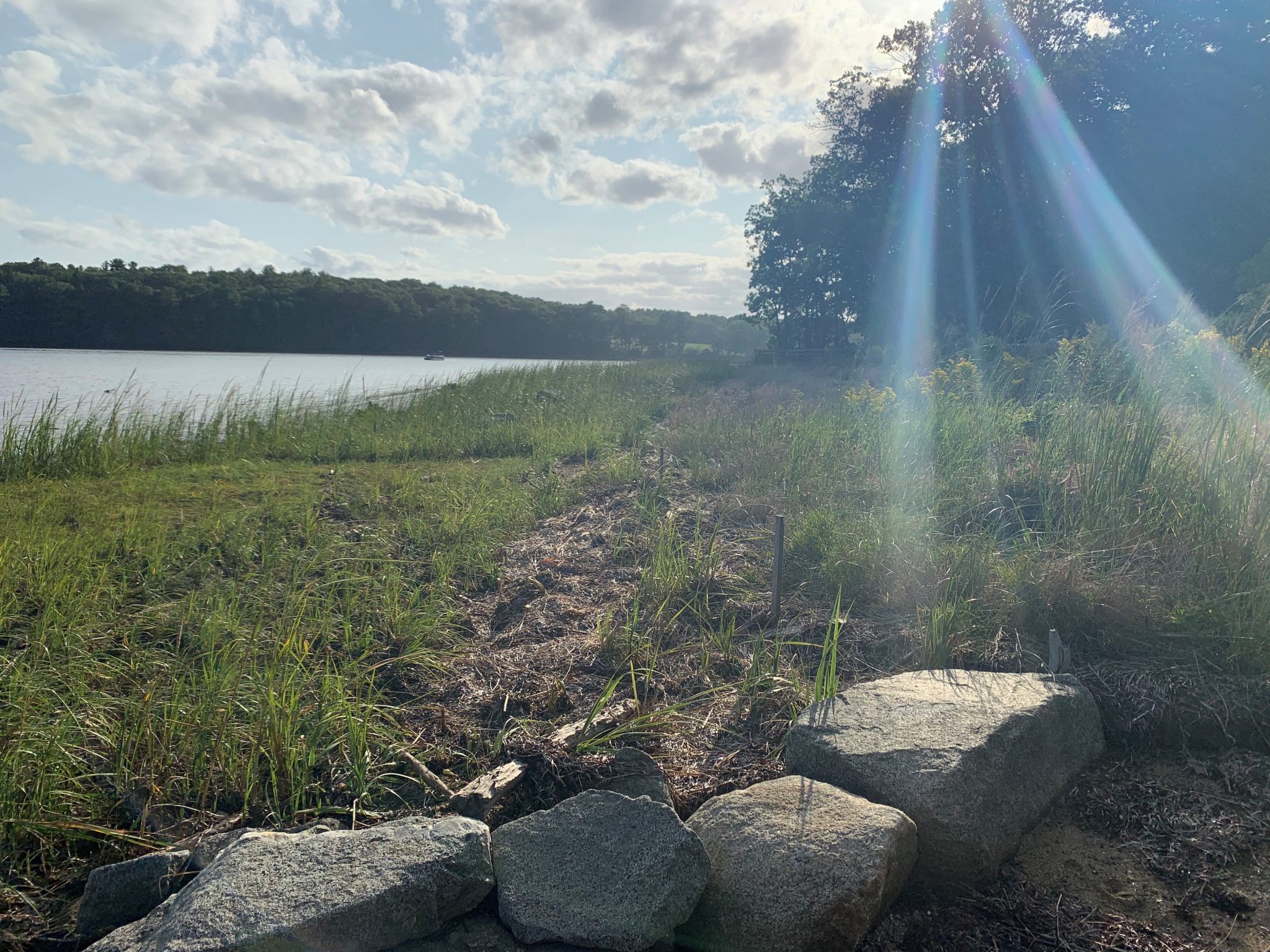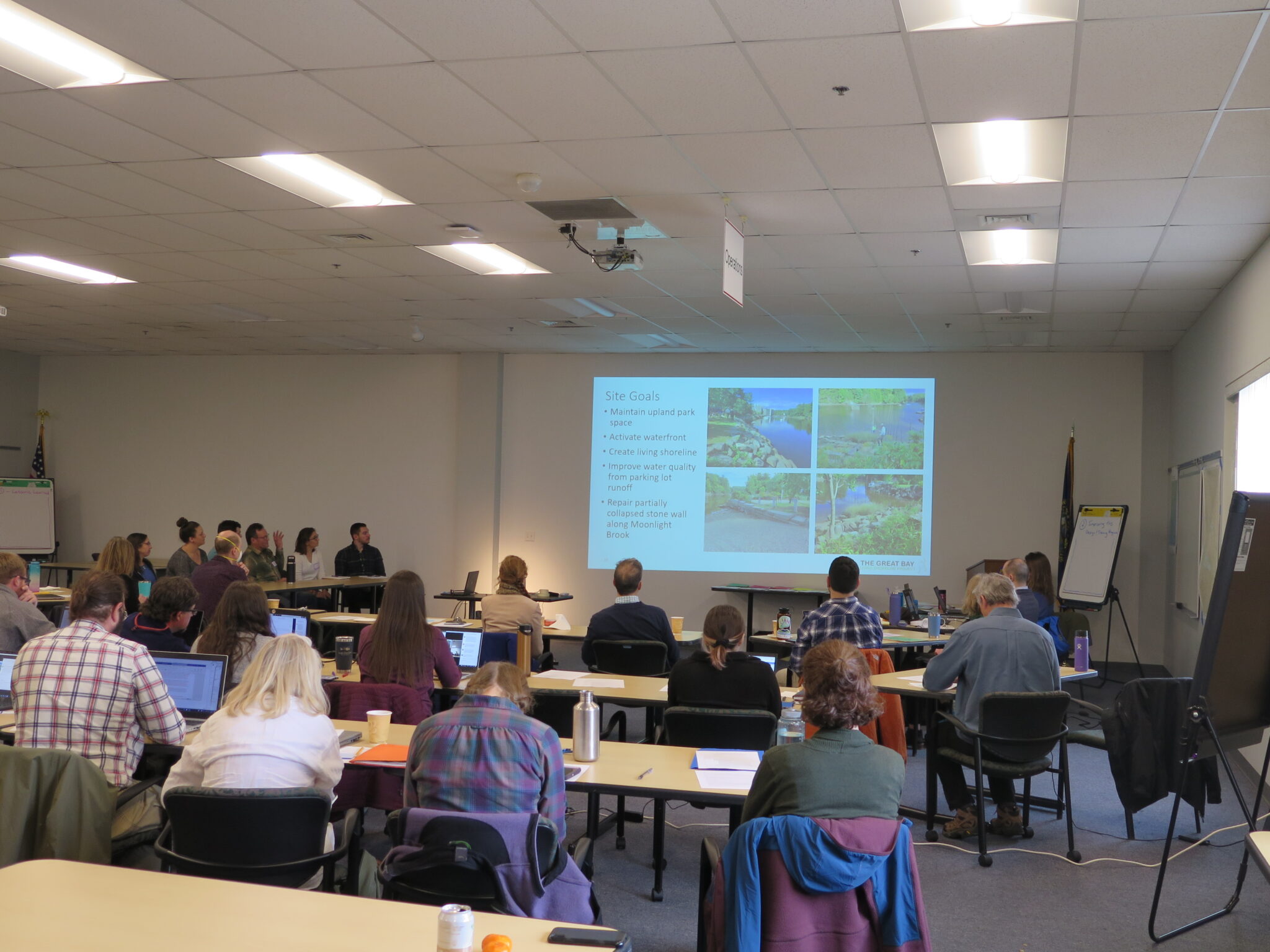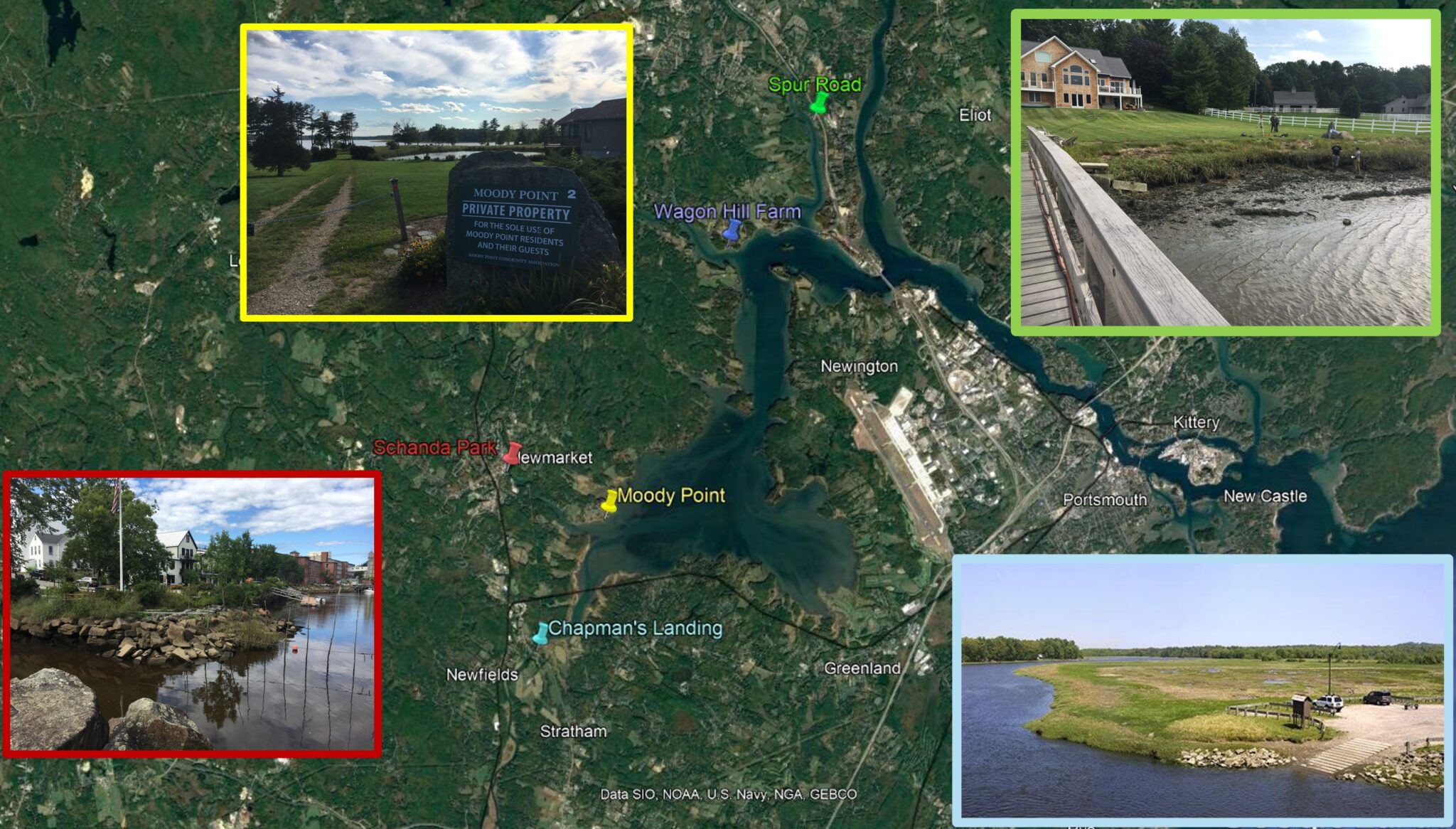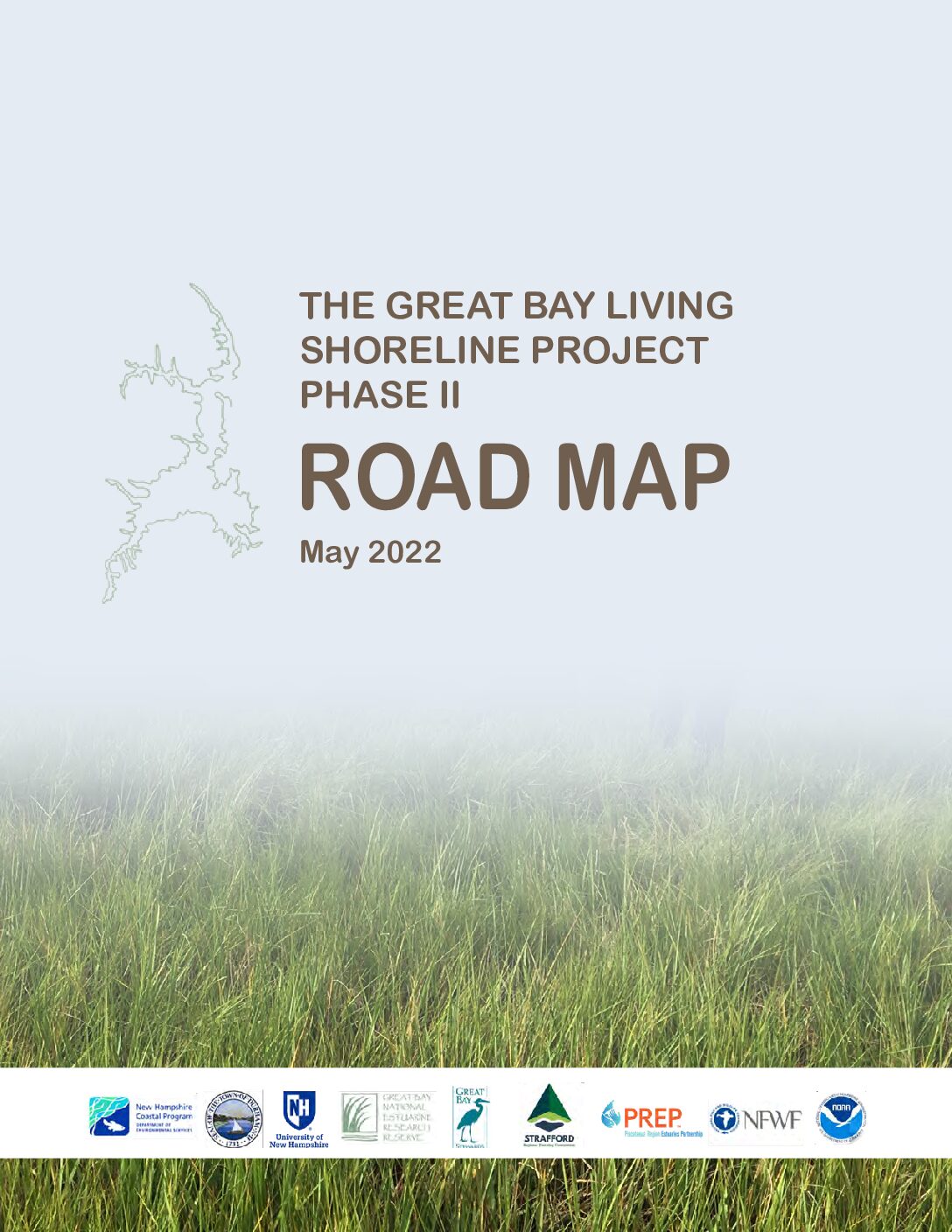The Great Bay Living Shoreline Project aimed to create new living shoreline projects in the Great Bay Estuary of New Hampshire that protect salt marsh habitat and coastal communities from erosion, sea level rise, and flooding.
Science tells us that traditional, grey shoreline stabilization techniques like “rip rap” rock walls are harmful to natural ecosystems, and in some cases, are more prone to failure than more natural shorelines during flood events. We also know that sea level rise is making shoreline erosion worse in the Great Bay Estuary, causing stress on our valuable salt marsh habitats as well as public and private land.

PROJECT BACKGROUND
As part of the Great Bay Living Shoreline Project, four potential living shoreline sites were identified in Great Bay. Four design teams, comprised of professional engineers, landscape architects, and ecologists, participated in an 8-month design and training program that culminated in a suggested shoreline design for each site. At the bottom of this webpage are links to learn more about each of the four sites and the proposed living shoreline designs.
Before learning about each of the four projects, check out the Project Summary Page and Fall 2021 Project Update below to learn more about the Great Bay Living Shoreline project as well as the Project Guidance section with provides resources and references used throughout the project.

PROJECT GUIDANCE
The Design Teams were supported by a large group of project partners. UNH scientists supported the design teams through several workshops and a guided site assessment process.
To learn more about the principles and recommendations that guided the design projects, view the Design Process Template, Living Shoreline Resource & Reference Guide as well as the recorded presentations from the final workshop in April 2022.
UNH Professor Dave Burdick explains how living shorelines can be used around Great Bay and offers an ecologist’s perspective on the essential ingredients of a successful project
UNH Professor Tom Ballestero provides an engineer’s perspective on the key elements needed to successfully design a living shoreline project
Kevin Lucey of the NHDES Coastal Program shares insight on permitting aspects of living shorelines in New Hampshire
The Strafford Regional Planning Commission (SRPC) developed a Road Map document which summarizes the steps taken during the Great Bay Living Shoreline Project with feedback provided by program partners and participants. The Road Map also discusses the next steps to increase the feasibility of implementing living shorelines in Great Bay Estuary.
DESIGN TEAM DELIVERABLES
Professional design teams worked at four sites around Great Bay. Click the link by each photo to learn more about the site, the design team members, and the team’s preliminary design for that shoreline. Please note, the preliminary designs and recommendations for each site were not final designs and should not be used for construction.

What is a living shoreline?
A living shoreline is a management practice that provides erosion control benefits; protects, restores or enhances natural shoreline habitat; and maintains coastal processes through the strategic placement of plants, stone, sand fill and other structural organic materials.
what will the project accomplish?
Between January 2021 through May 2022, the Project team worked with Great Bay community stakeholders and identified four new living shoreline project sites, developed preliminary designs for the chosen sites, provided practical living shoreline design learning opportunities for professionals, and shared recommendations for future living shoreline projects in the Great Bay Estuary.
who is involved?
The Project was supported by the National Fish and Wildlife Foundation (funding partner), the Town of Durham, the NHDES Coastal Program, the University of New Hampshire, the Great Bay National Estuarine Research Reserve, the Great Bay Stewards, Piscataqua Regions Estuaries Partnership, and the Strafford Regional Planning Commission. The project will engage municipal, private, and professional stakeholders.
QUESTIONS?
Contact:
Aidan Barry
Coastal Resilience & Habitat Specialist
Coastal Program
NH Department of Environmental Services
Aidan.T.Barry at des.nh.gov
(603) 559-9189


